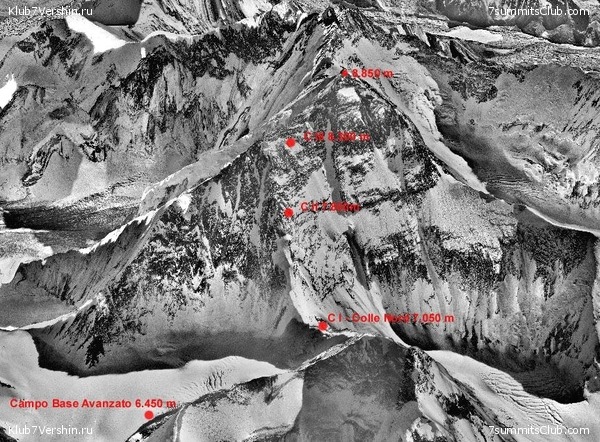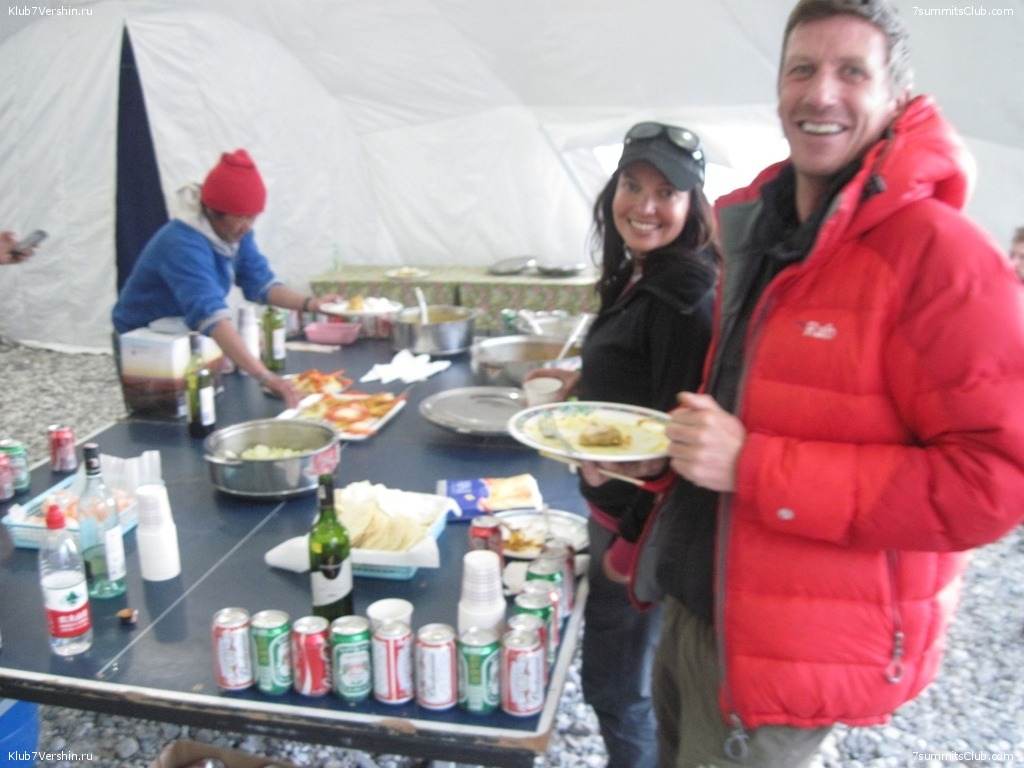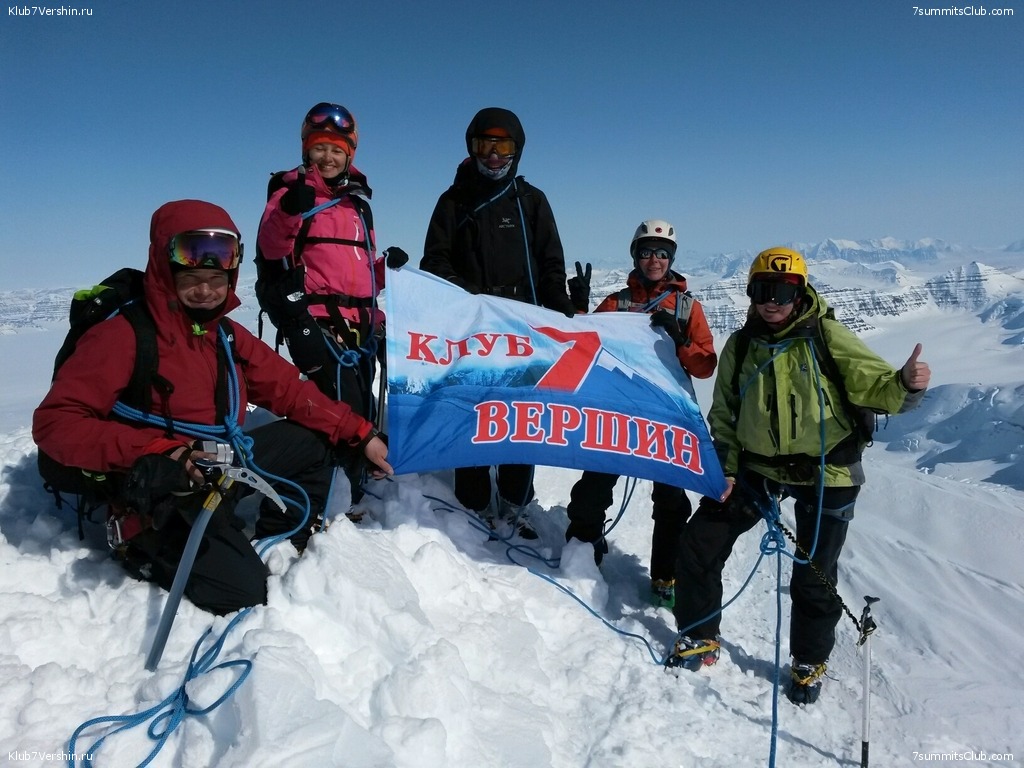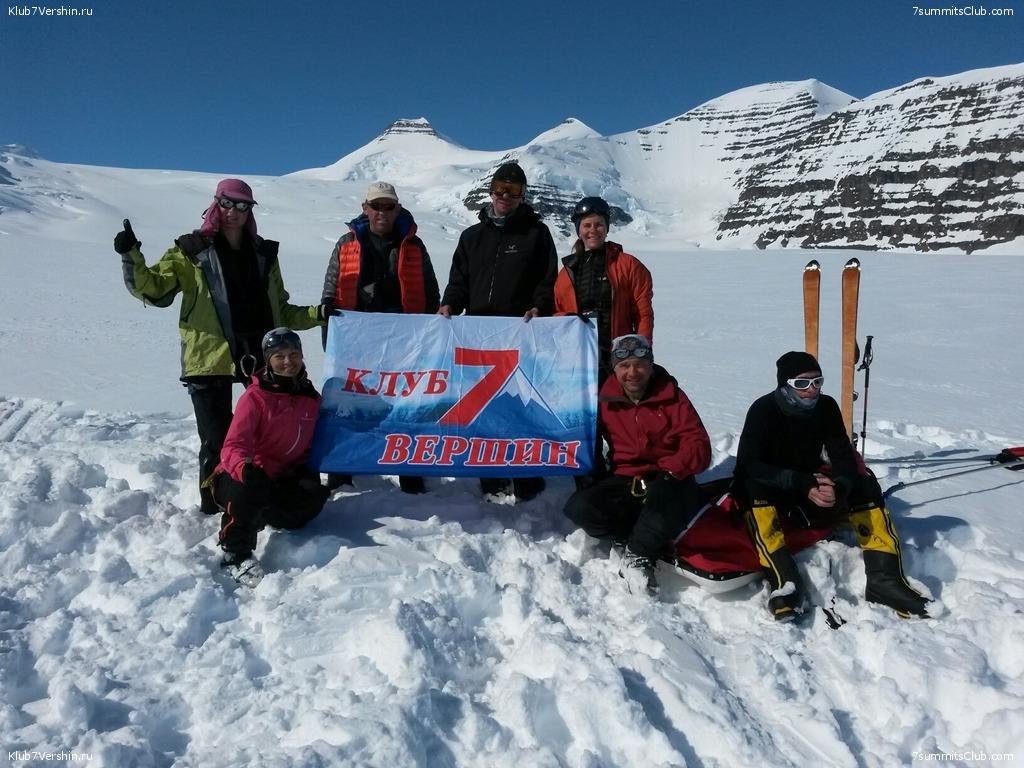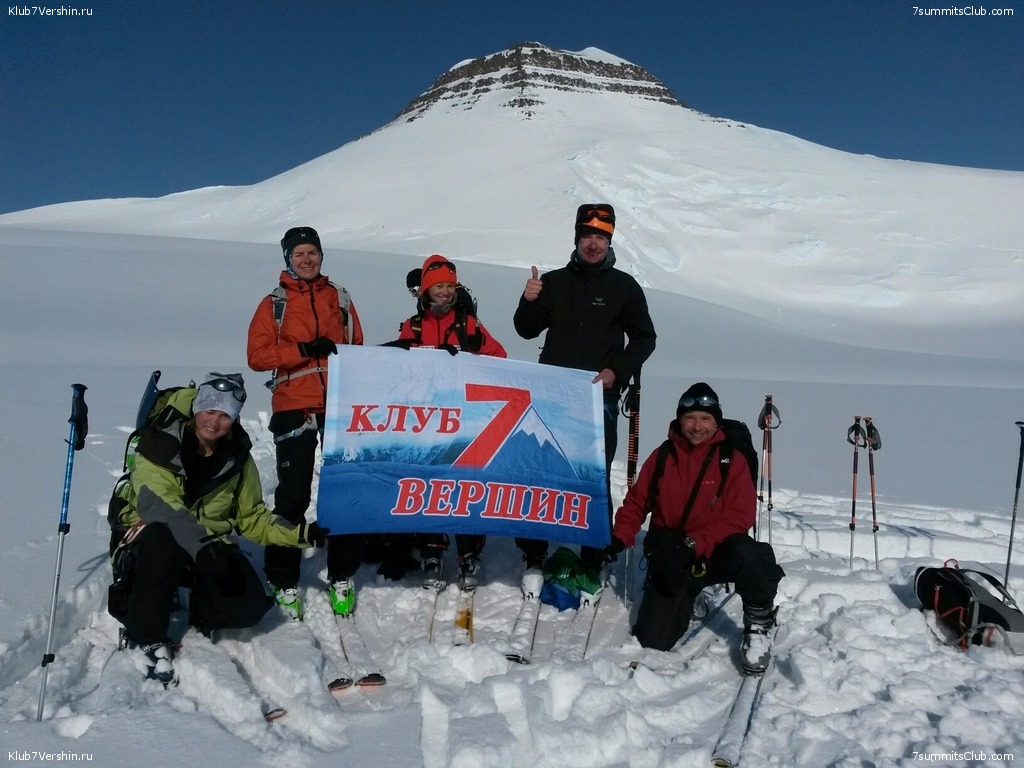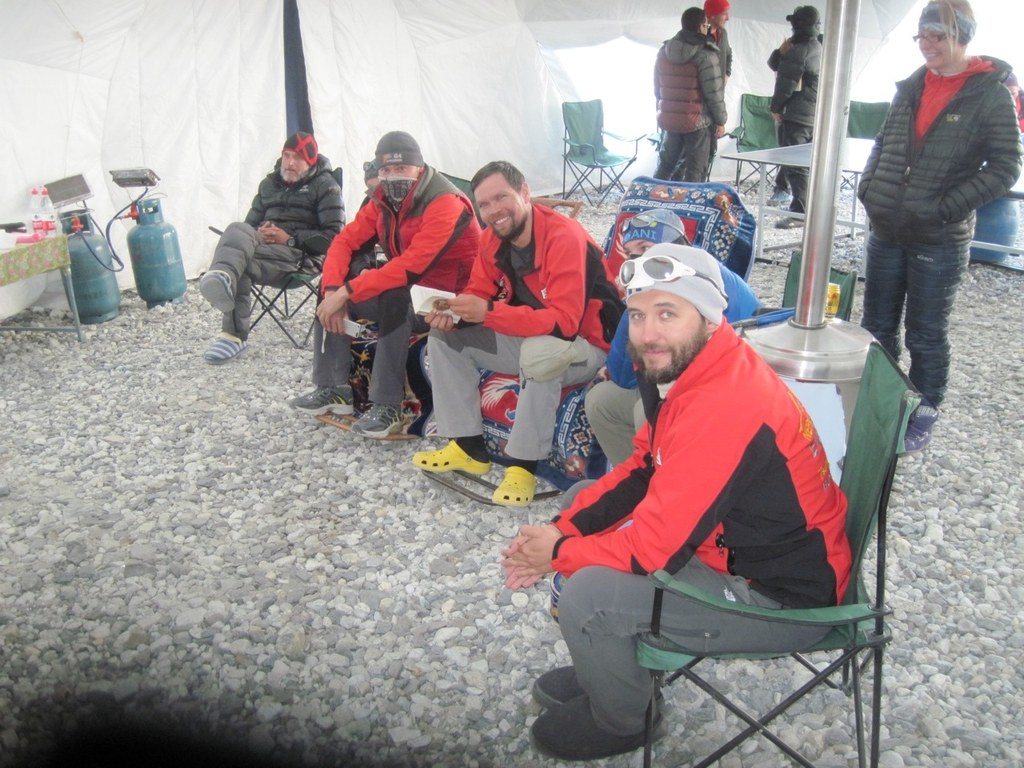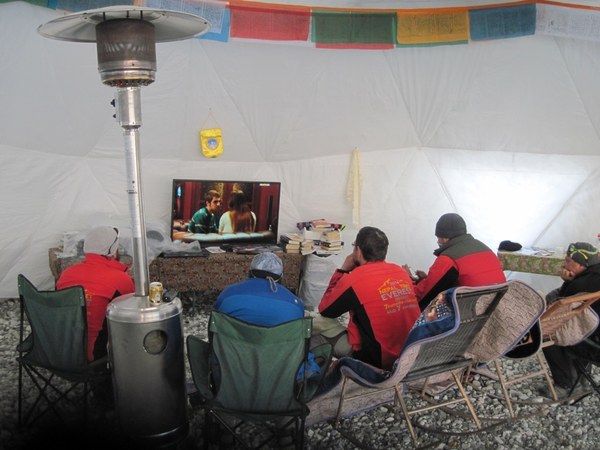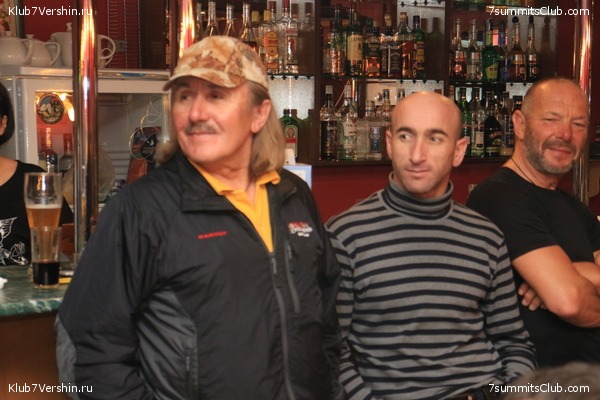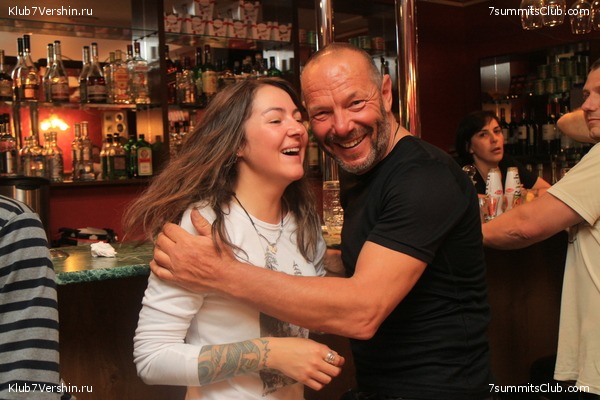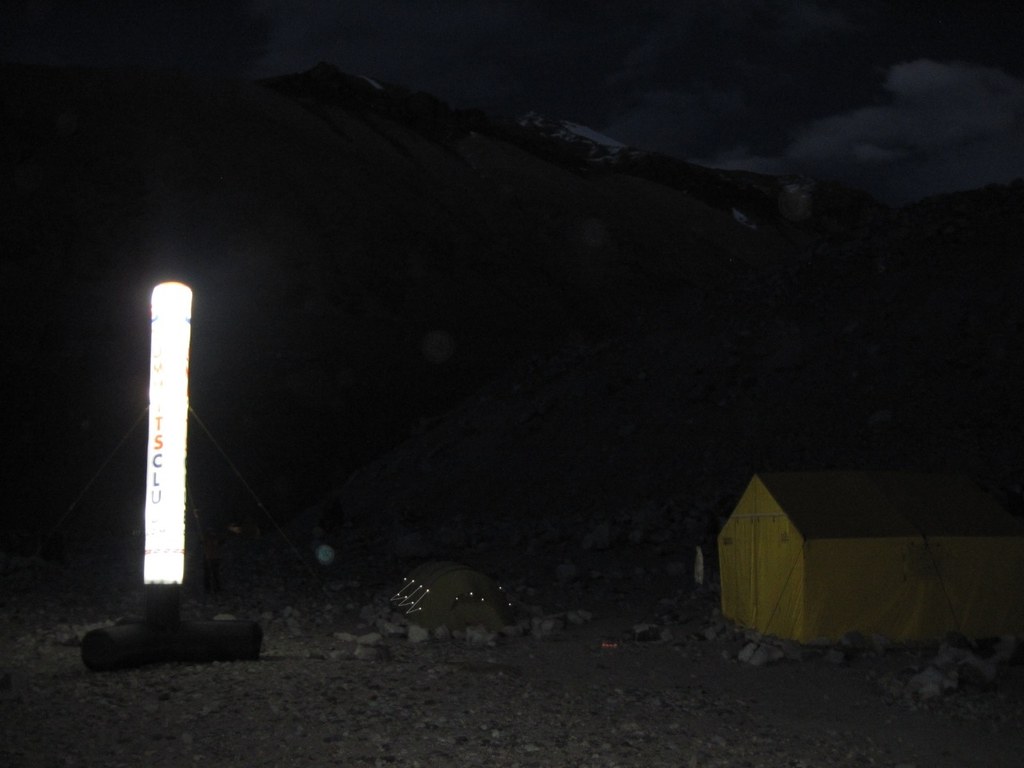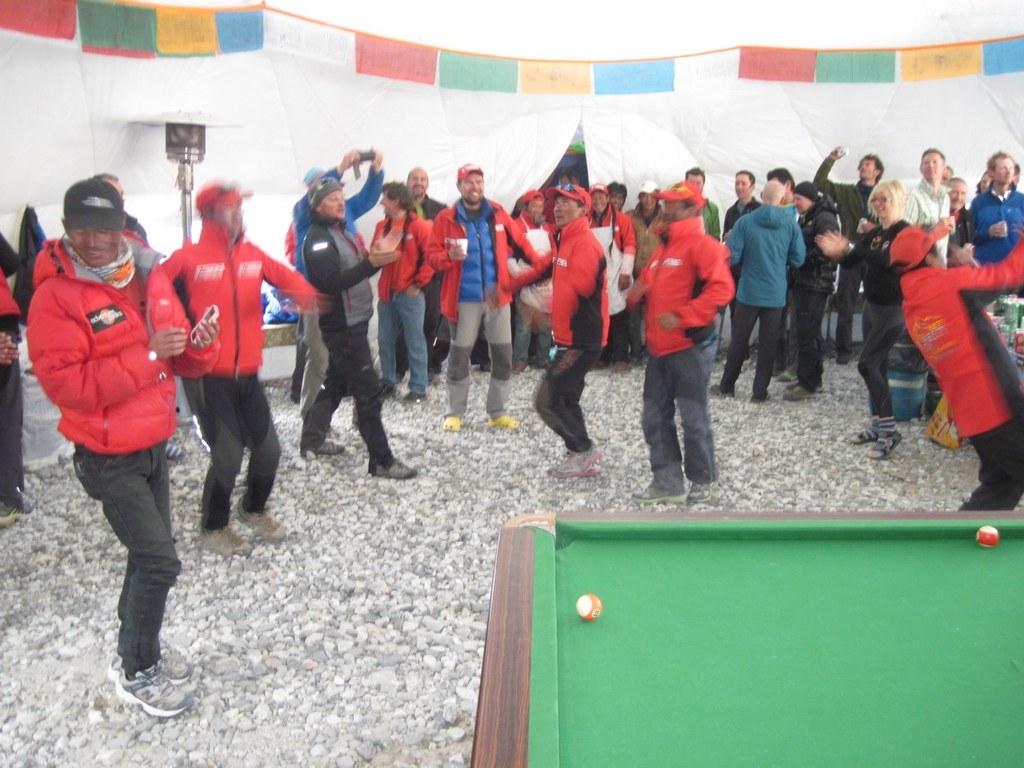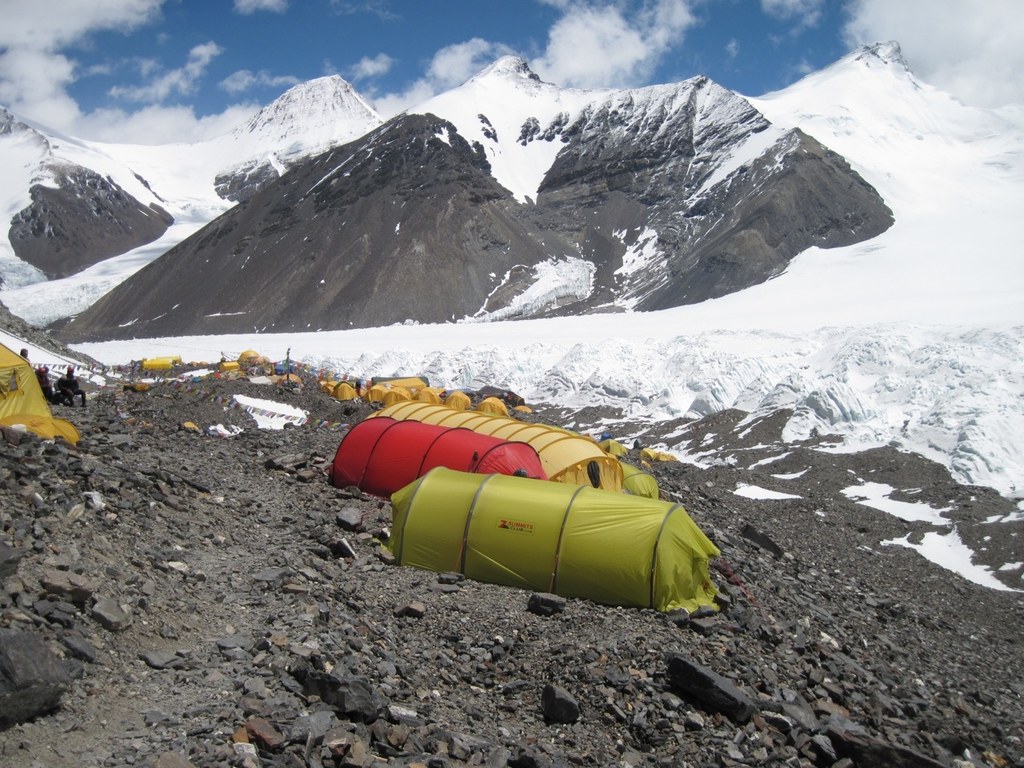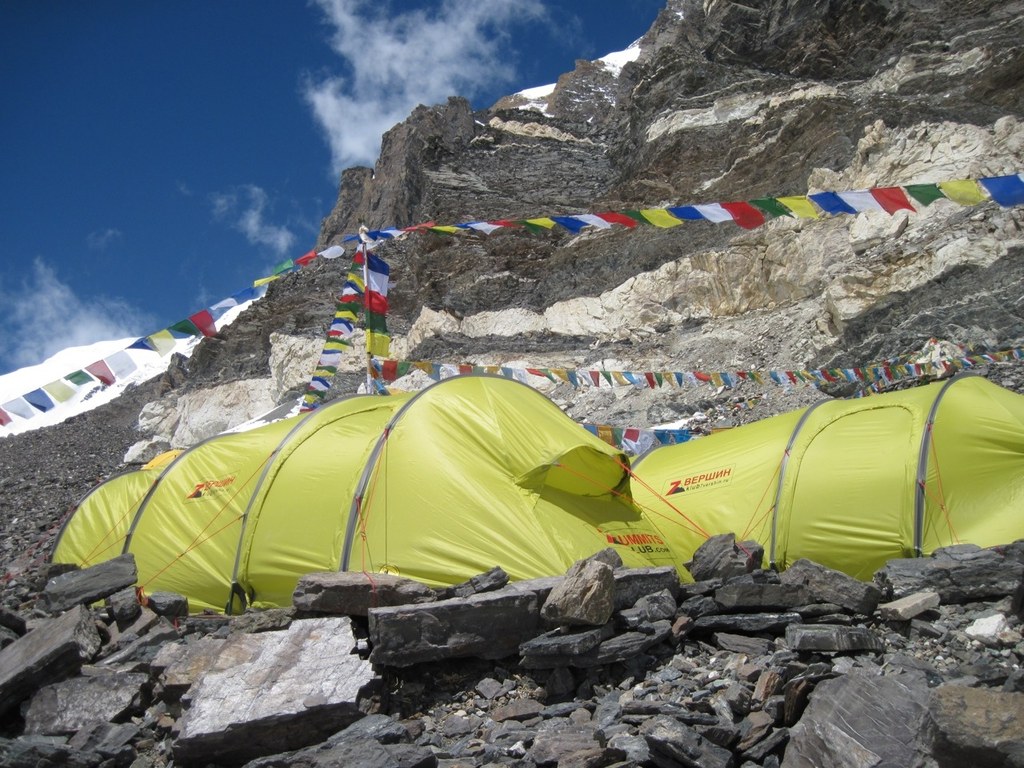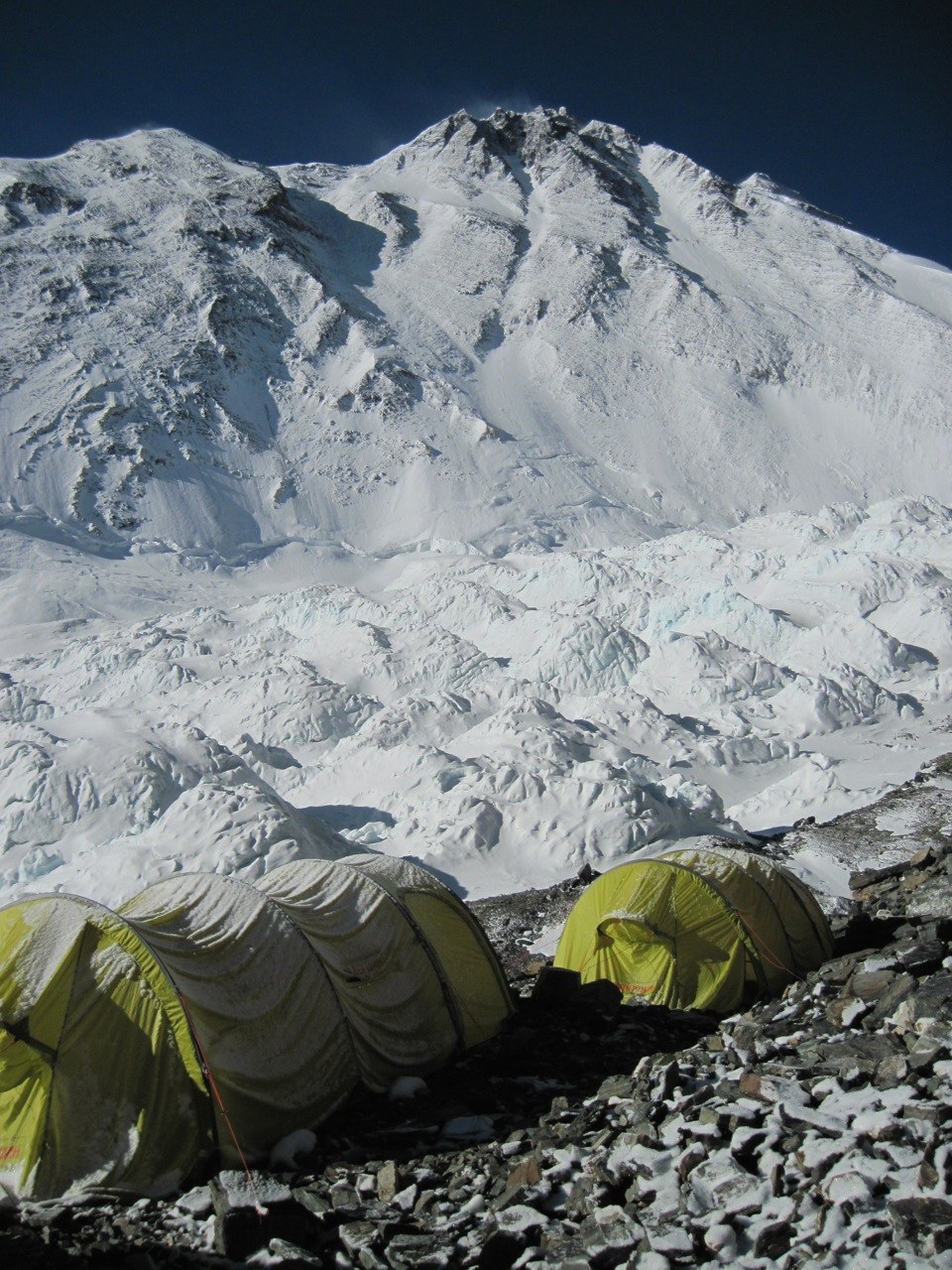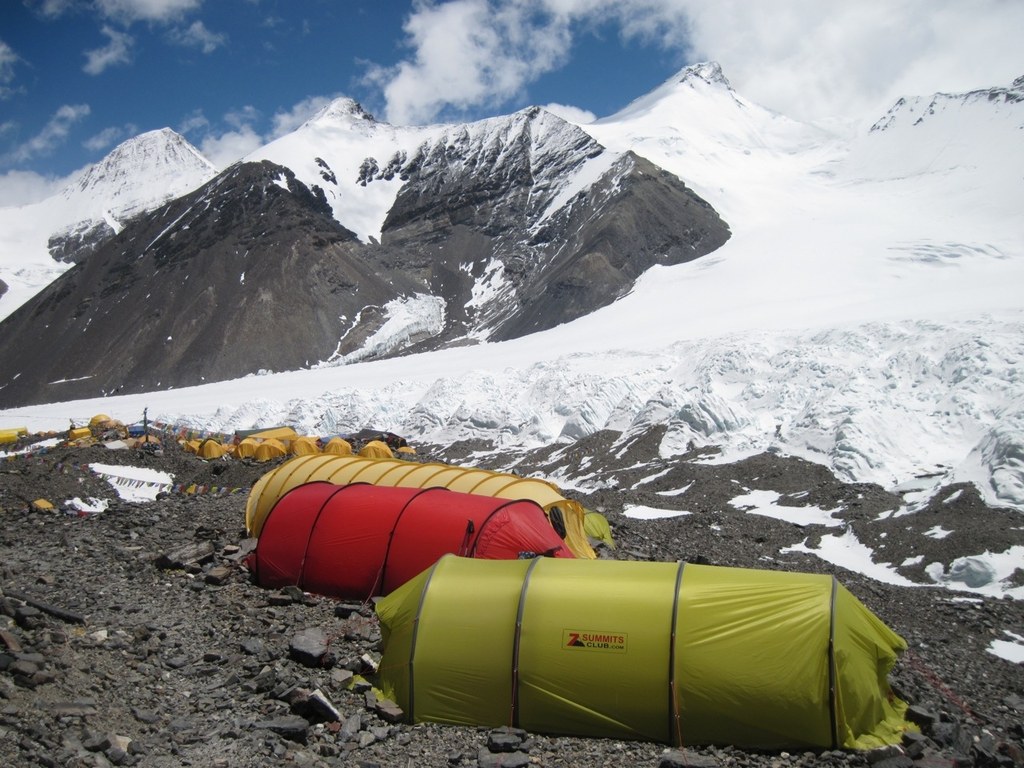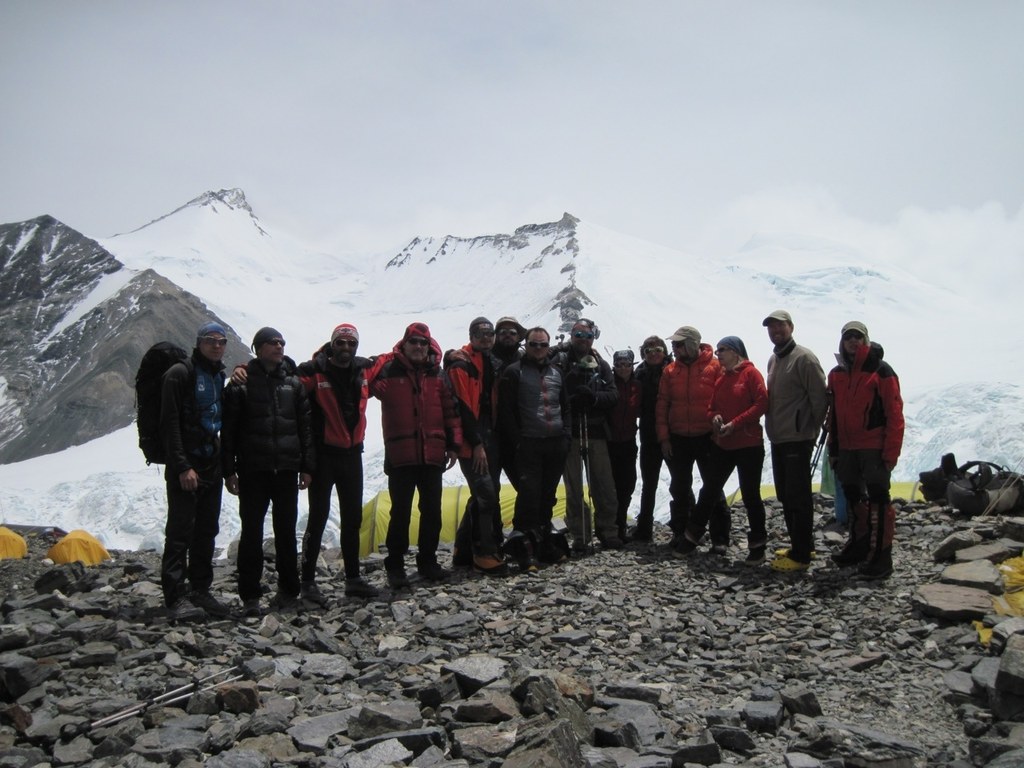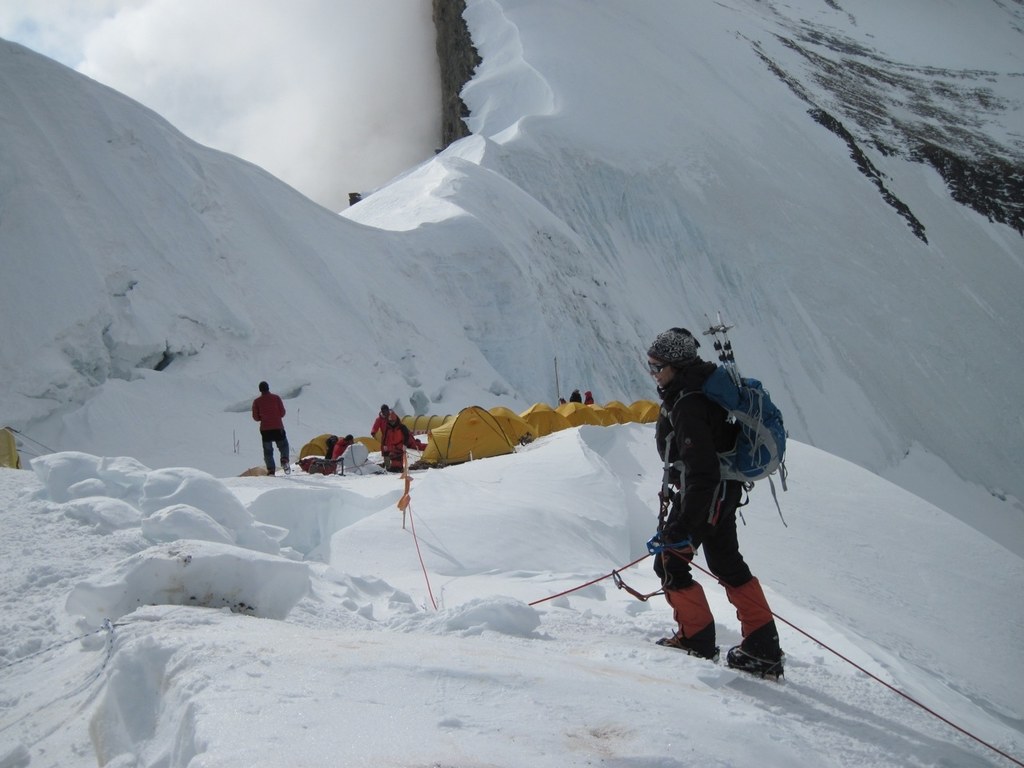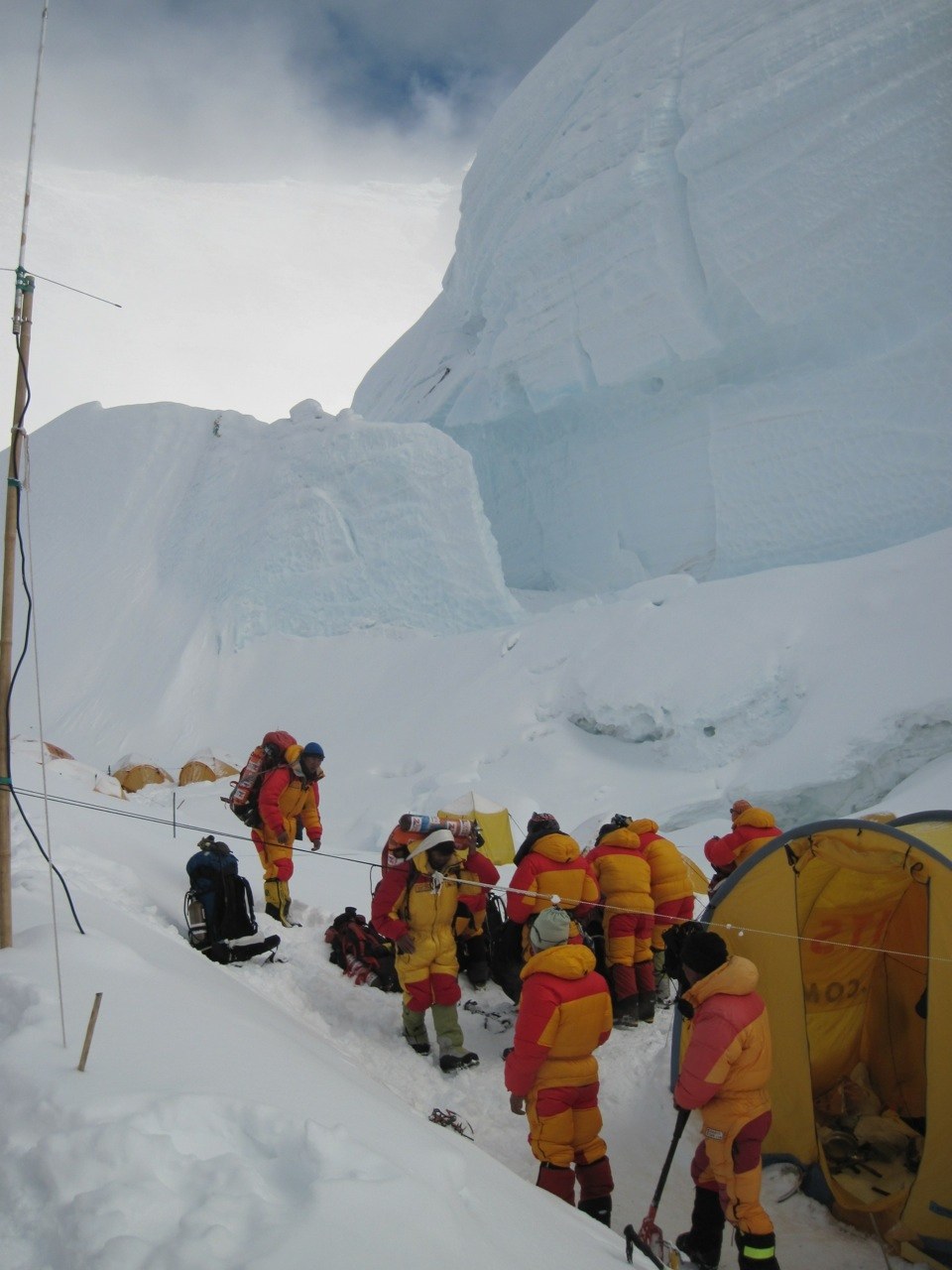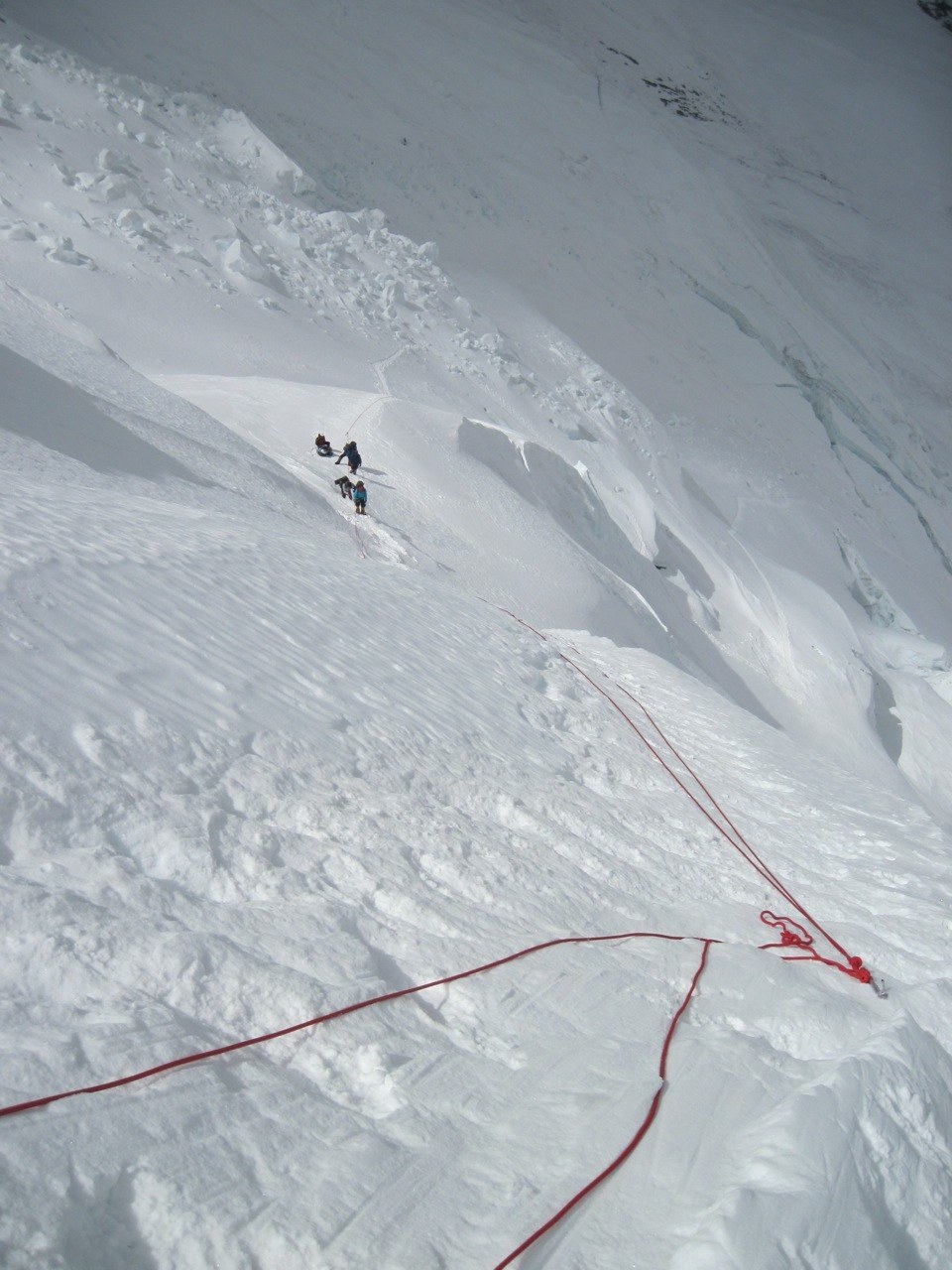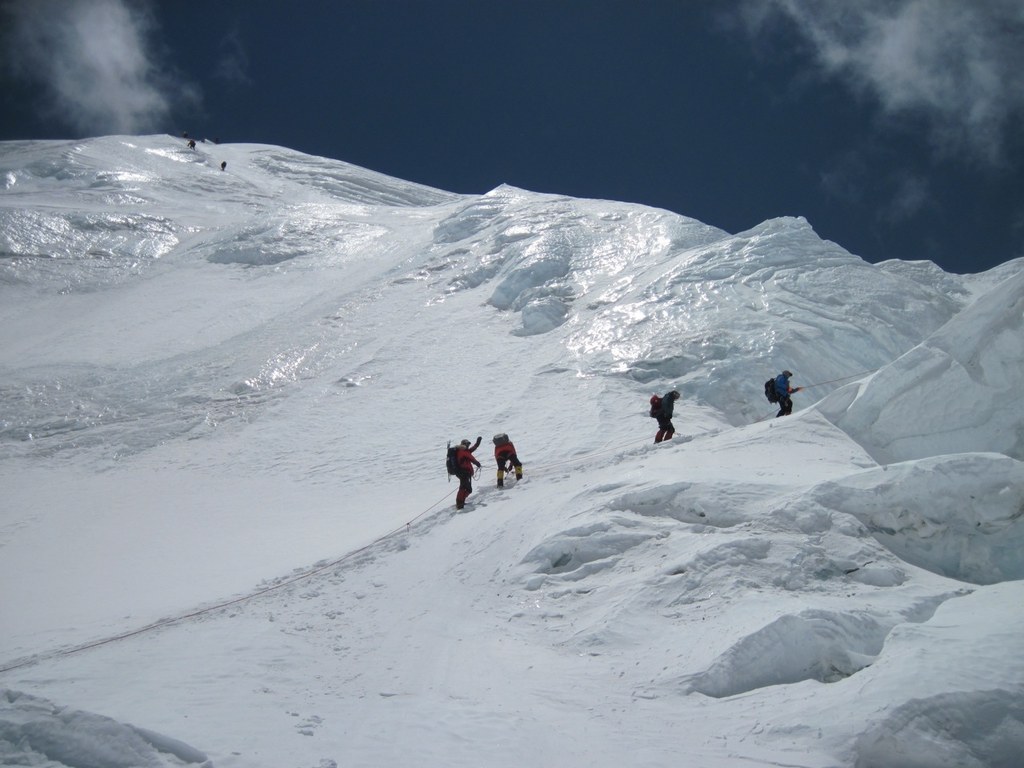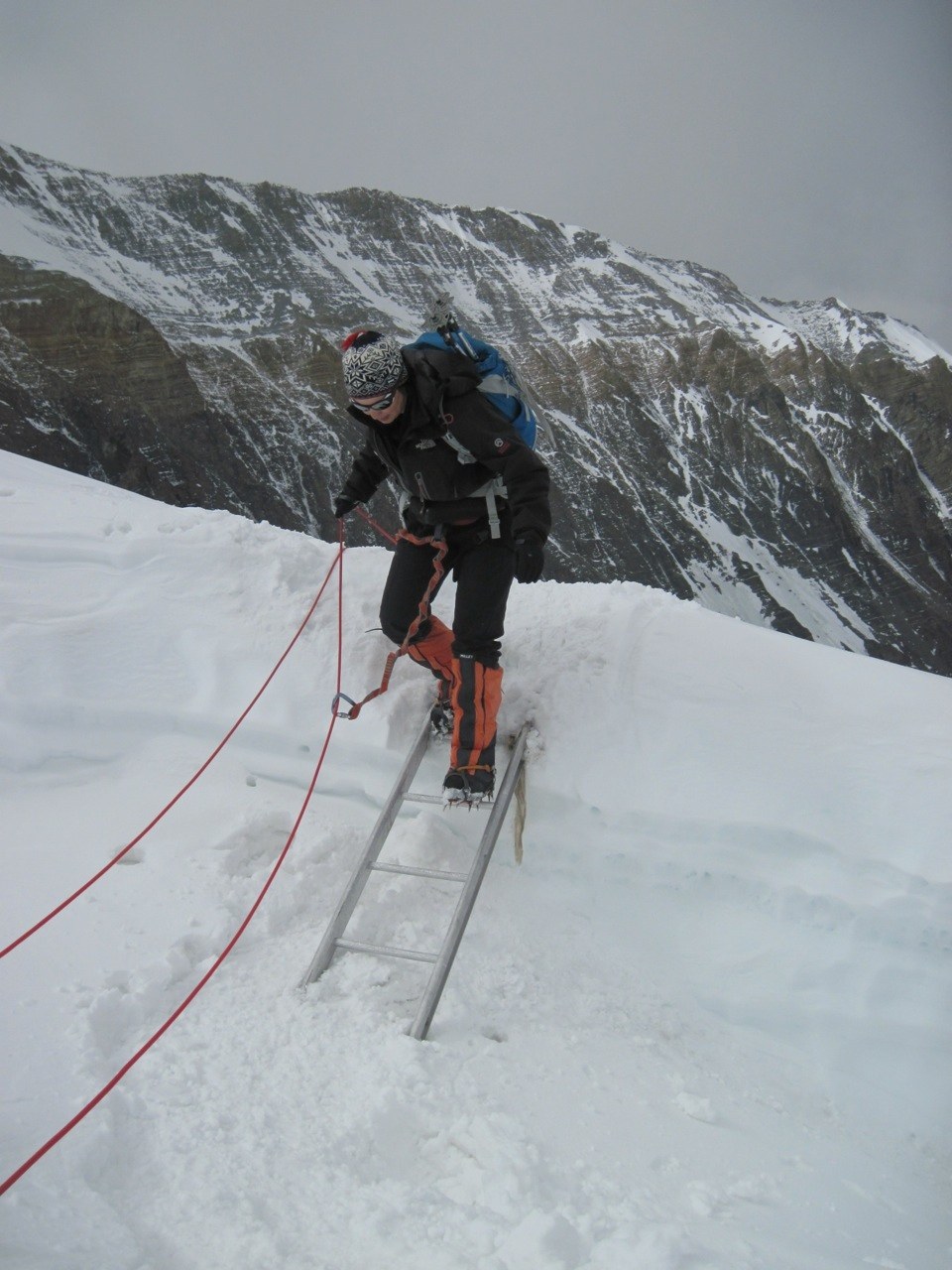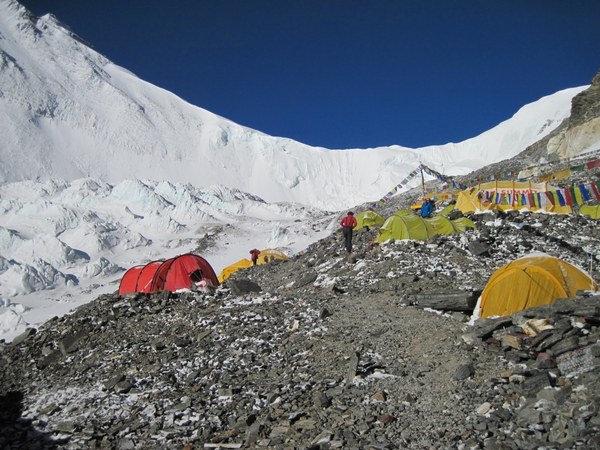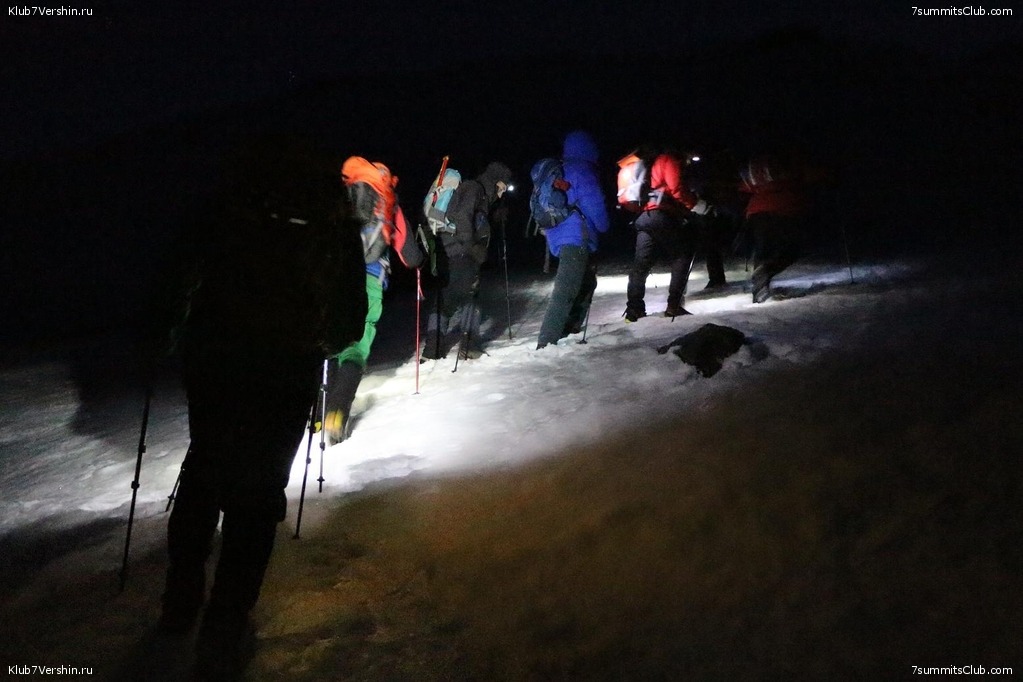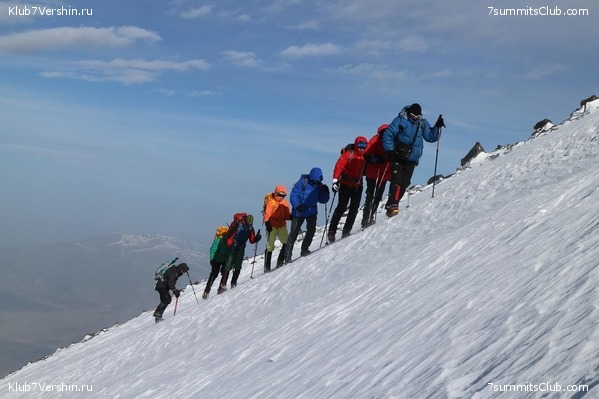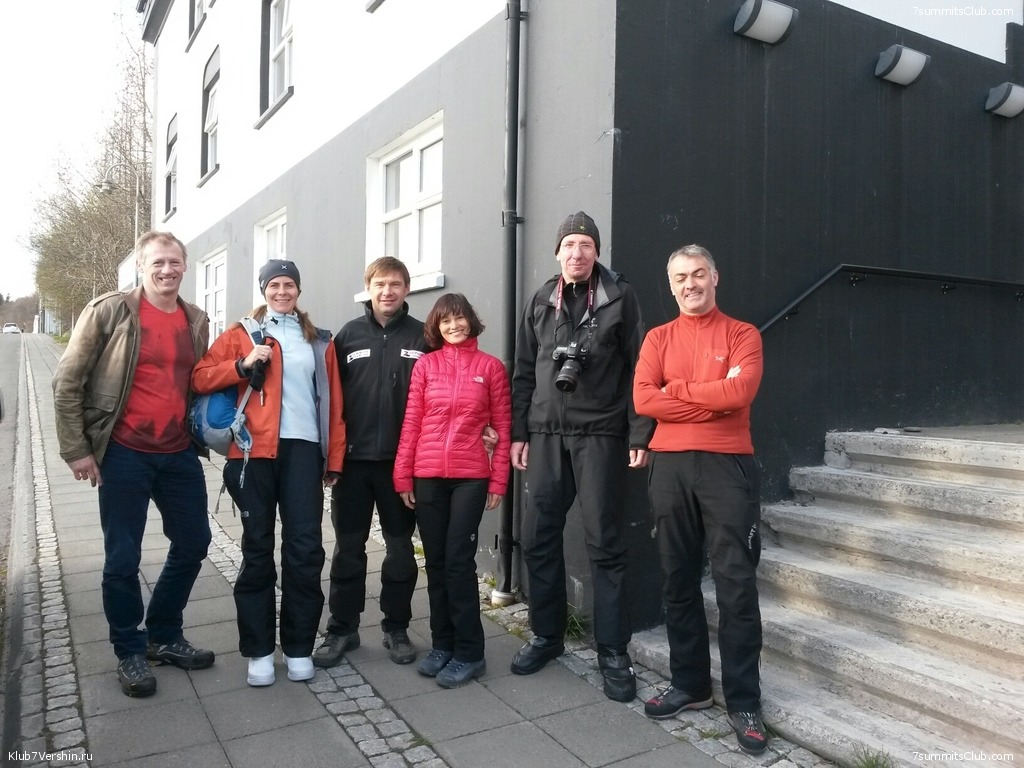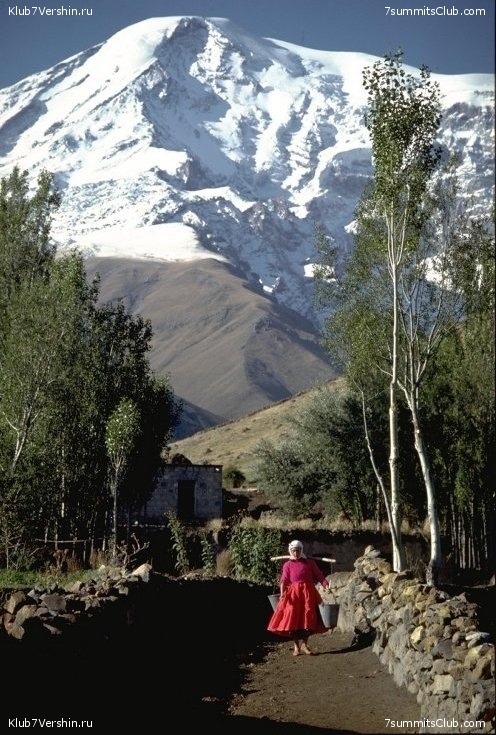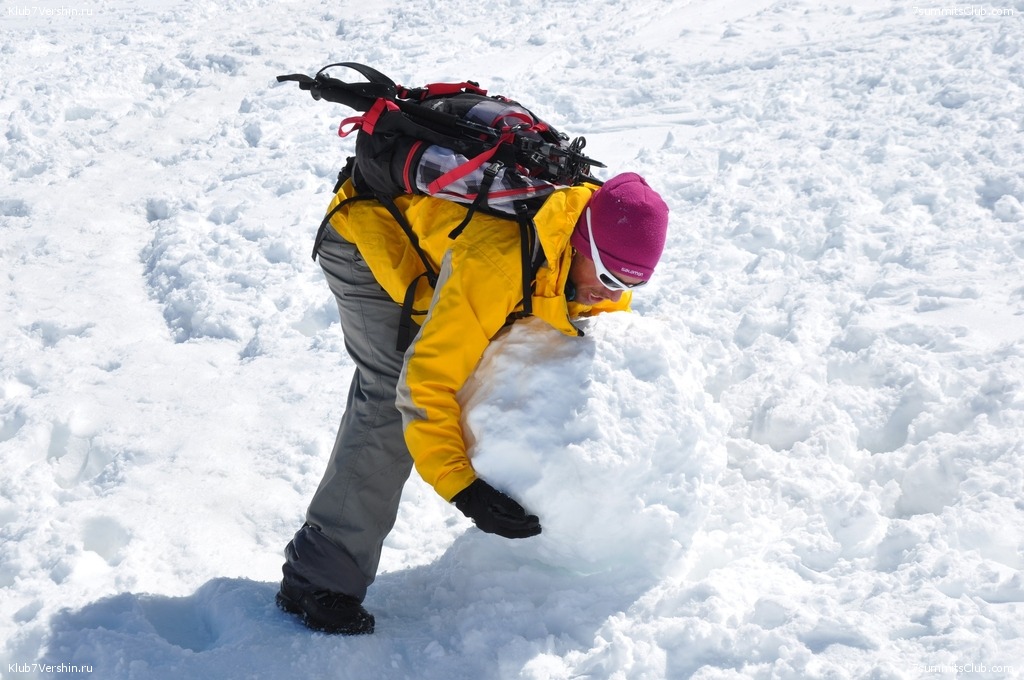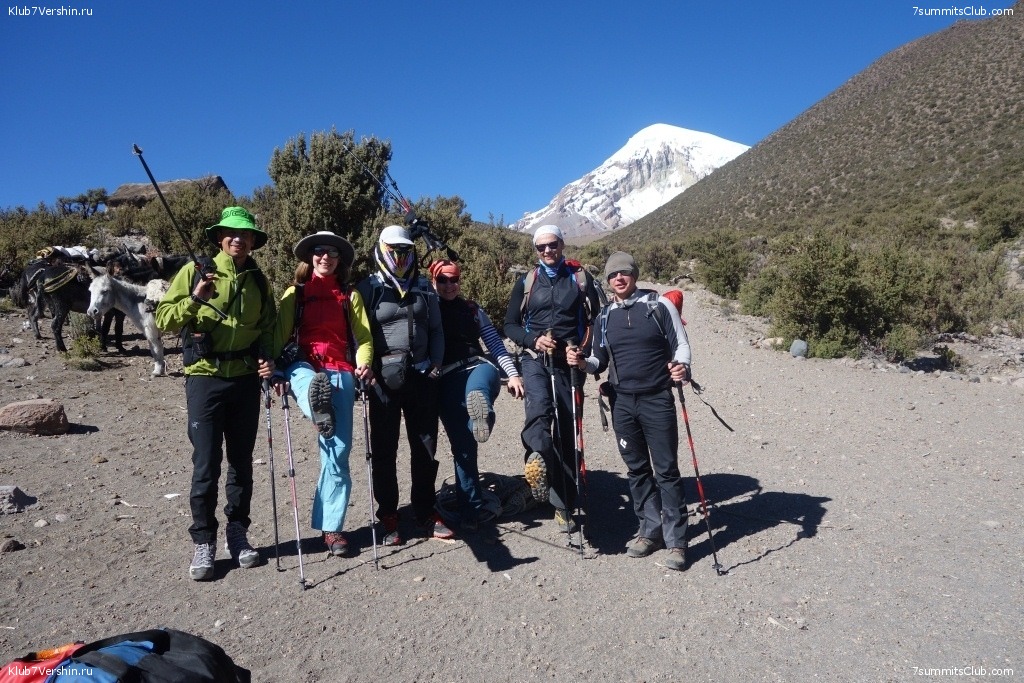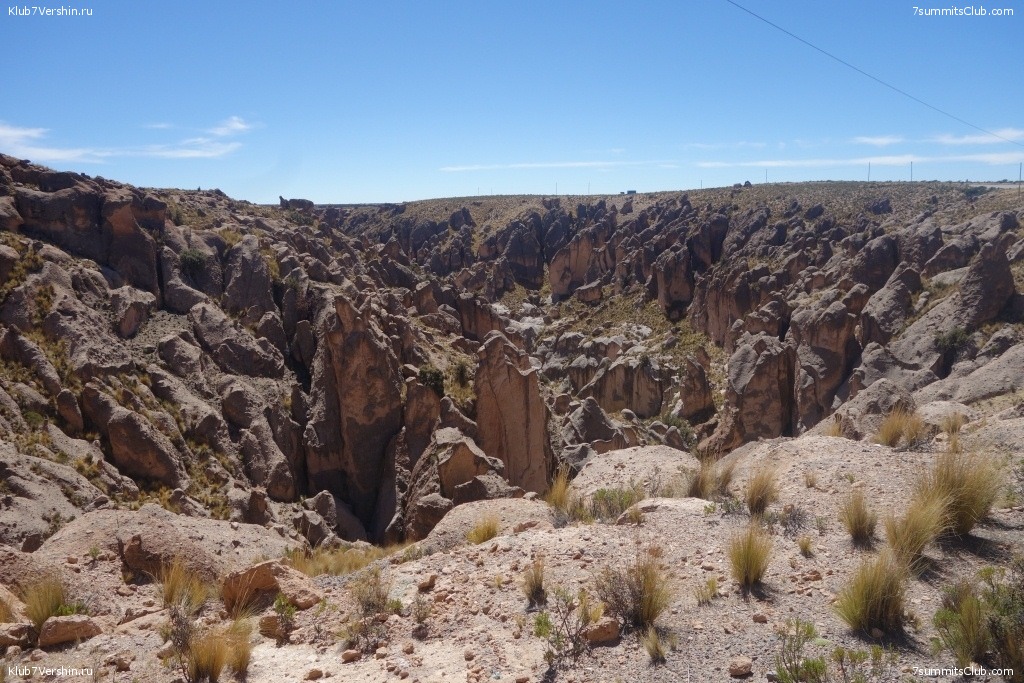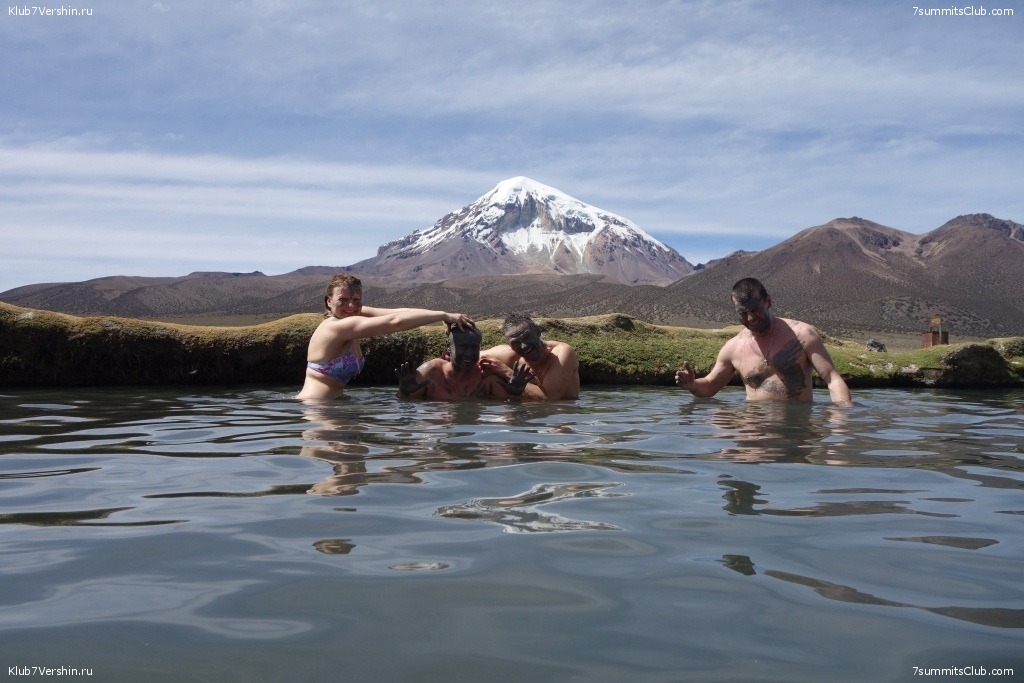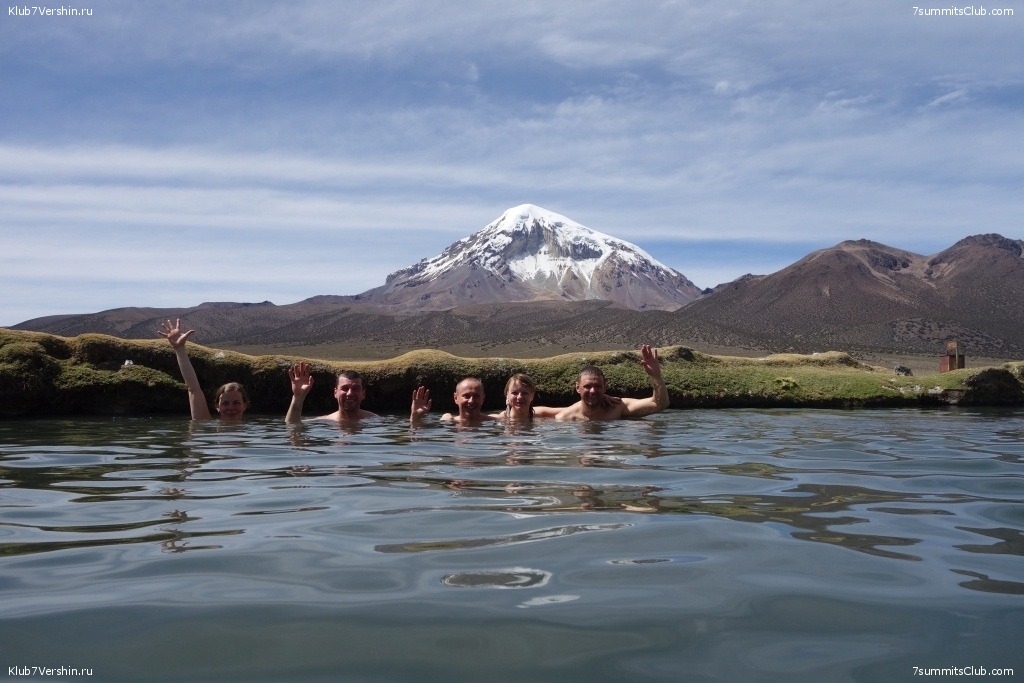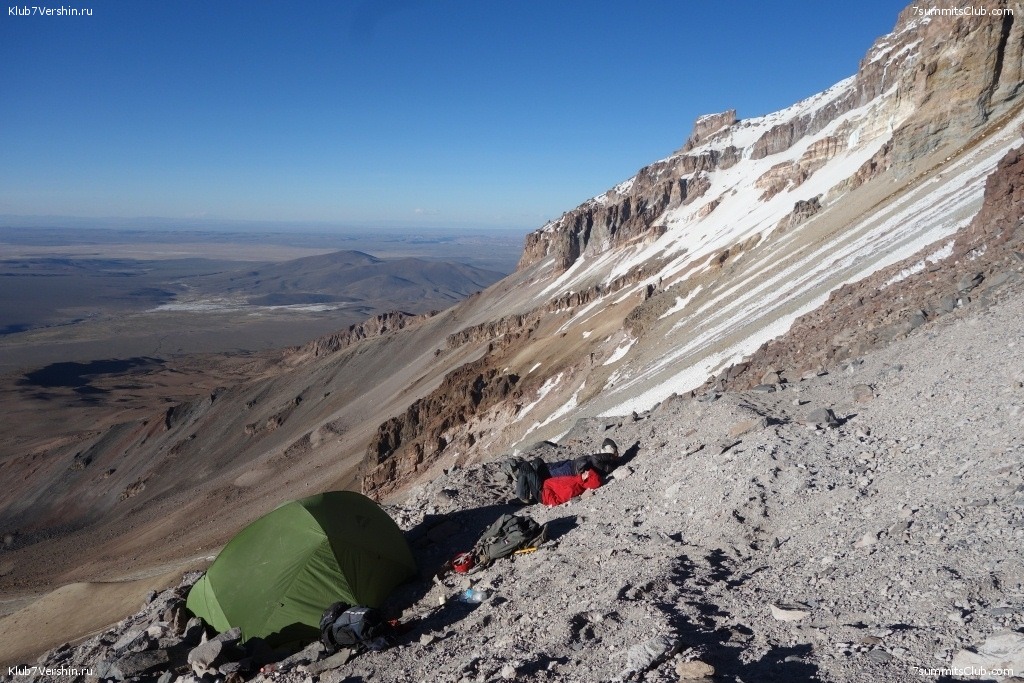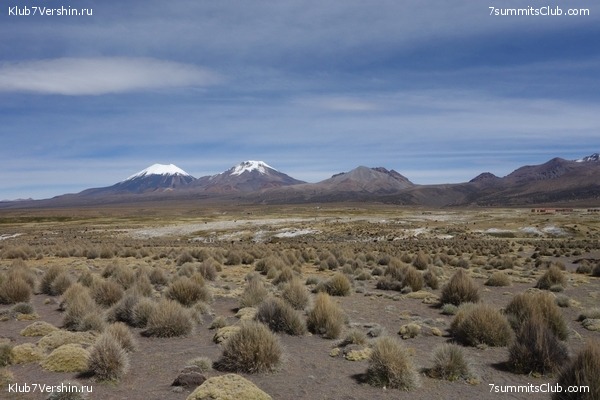All news - Page 269
Alex Abramov from Everest: SUMMIT! Our first team was on the top at 7 a.m.
Everest.
Hello! This is Alex Abramov. Today we have a great event. The first team - in strong wind and snow, reached the summit of Everest. They were on top at about 7 am, with a gap of about half an hour. All seven members, seven Sherpas and guide ...
Hello! This is Alex Abramov. Today we have a great event. The first team - in strong wind and snow, reached the summit of Everest. They were on top at about 7 am, with a gap of about half an hour. All seven members, seven Sherpas and guide Noel Hanna were on the summit of Everest. Now they go down. Surnames : Vasya Kernitsky, Zygmunt Berdyhovsky from Poland, Derek Mahon from Ireland, and Russian - Anton Seleznev, Sergey Dmitriev, Denis Abuev, Vlad Lachkarev. All now in the process of descent from the top…
And the second team goes to meet them from the camp of 7700, hopefully tonight to make the same heroic feat and go down alive and healthy. Goodbye!
Alex Abramov from North Col of Everest all goes according to plan, tomorrow – the summit bid ...
Everest.
Hello! Alex Abramov reports from the North Col of Everest. This is past few days, we hope - the last days of our expedition ... The first team of 9 members is now coming from the height of 7700 to the camp 8300 . Second team follows them ...
Hello! Alex Abramov reports from the North Col of Everest. This is past few days, we hope - the last days of our expedition ... The first team of 9 members is now coming from the height of 7700 to the camp 8300 . Second team follows them from a height of 7300 to 7700 . Good weather - not a cloud. Wind, for me from the tent ... well it seems pretty weak. Follow our news. Until now everything goes according to plan. And , in general, on the next night the first team should go for the summit. Goodbye!
At last it begins! Members of our expedition and guides of 7 Summits Club started to conquer Everest
Alex Abramov from the Everest base camp : As you understand, all members are alive and well, all ready to storm the Summit. May 17 th, after studying the weather forecast, the guides decided to start out in the morning on May 18th. Team led ...
Alex Abramov from the Everest base camp :
As you understand, all members are alive and well, all ready to storm the Summit. May 17 th, after studying the weather forecast, the guides decided to start out in the morning on May 18th. Team led by Noel Hanna came out of the Base camp to the Middle camp .
And tomorrow, the second team under the leadership of Alex Abramov will be start in the same direction.
Days of summit bid for two groups scheduled now for 25th and 26th of May .
The day before, we had a party on the end of the seating in the base camp. We invited the team Adventure Peaks, led by my friend Rob, with whom we often met in Antarctica.
It was a lot of music, and dance, and toasts, and even a " farewell cake ."
And see latest pictures:
Goodbye, Greenland! - Lyudmila Korobeshko with her group is in Iceland. PHOTOS
Today, May 16th we flew to Iceland. Tomorrow we'll be gone according to plan in Russia. All OK. There are two summits! Russian second ascent on the highest point of Greenland and the first Russian on the second highest summit. Perhaps it is ...
Today, May 16th we flew to Iceland. Tomorrow we'll be gone according to plan in Russia.
All OK. There are two summits! Russian second ascent on the highest point of Greenland and the first Russian on the second highest summit. Perhaps it is also the first for Russian women ….
Luda Korobeshko
Lyudmila Korobeshko from Greenland : the group made the second ascent to the peak of Dome!
Lyudmila Korobeshko from an expedition to Greenland in the peak Gunnbjorn. Yesterday, May 13 we made another ascent. We all climbed the second highest mountain in Greenland - the peak Dome. Ascent was much more difficult than climbing on ...
Lyudmila Korobeshko from an expedition to Greenland in the peak Gunnbjorn. Yesterday, May 13 we made another ascent. We all climbed the second highest mountain in Greenland - the peak Dome. Ascent was much more difficult than climbing on Gunnbjorn, because we went straight from the base camp to the summit, from 2200 to 3700 m. The weather was surprisingly cold. That is, the tent was minus 20, and actually at the top it was minus 30 or lower. We went around 12 hours on the ascent and descent. However, the descent was fast and pleasant: skiing on virgin snow .
Tomorrow, May 15, it should be a plane for us. If all goes well, May 15, we'll be in Iceland. Goodbye!
Everest expedition the 7 Summits Club : big waiting at base camp began
Our team sits at the base camp and it looks like another 10 days the weather will not good. Forecast gave a good weather on May 27, may be. Of course, if the monsoon not comes. We tried to have fun, watch movies etc. Billiards Championship ...
Our team sits at the base camp and it looks like another 10 days the weather will not good. Forecast gave a good weather on May 27, may be. Of course, if the monsoon not comes.
We tried to have fun, watch movies etc. Billiards Championship of camp is in full swing. Maybe we'll go down to catch trout. Natasha and Sergei cooked Russian salad and fried potatoes.
In general, this year the weather does not make us happy: on the top constantly there is strong wind 100 km / h and more. Sherpas team have not fixed the ropes and said that until May 25 they could not do it.
The main thing that our mood is GREAT !
Alexander Abramov
leader of the expedition to Everest 2014
Lyudmila Korobeshko from Greenland : SUMMIT of Gunnbjorn !
Hi! Lyudmila Korobeshko from the expedition to Peak Gunnbjorn in Greenland. We did it! We went to the top of Gunnbjorn, the highest summit of Greenland and just few minutes we came down here to assault camp. The ascent was interesting, very ...
Hi! Lyudmila Korobeshko from the expedition to Peak Gunnbjorn in Greenland. We did it! We went to the top of Gunnbjorn, the highest summit of Greenland and just few minutes we came down here to assault camp. The ascent was interesting, very beautiful, we were lucky with the weather. However, there was a lot of snow, so we were relatively slow. As a result, it took 6 hours on the climb up. But, in general, nothing to regret, excellent view, a lot of beautiful pictures we made. And for the way down we spent an hour and a half, I guess. Because when we passed steep sections, put skis, and after only 20 minutes we arrived to the camp. Overall, every people liked this climb. Tomorrow we go back down to the base camp. And we still have two days of , think about what to do with them. Best regards!
The open season party in Terskol
Elbrus.
Dear Friends! We opened the season on Elbrus! Italians sang, we drank and danced. We started the season very well and the whole season should be just super! Thanks to everyone who came, it was nice to see you after a long winter! "7 Summits ...
Dear Friends!
We opened the season on Elbrus!
Italians sang, we drank and danced.
We started the season very well and the whole season should be just super!
Thanks to everyone who came, it was nice to see you after a long winter!
"7 Summits Club" Terskol.
Ludmila Korobeshko from Greenland: we are at the assault camp
Hello! Ludmila Korobeshko reports from the expedition to Greenland, to peak Gunnbjorn. Today it was a very difficult day, we went from the base camp to the high camp. It is from 2300 to almost 3000 meters. Actually, the idea was to ...
Hello! Ludmila Korobeshko reports from the expedition to Greenland, to peak Gunnbjorn. Today it was a very difficult day, we went from the base camp to the high camp. It is from 2300 to almost 3000 meters. Actually, the idea was to try to climb from bottom to the top. But it's good that this idea was refused. Because a lot of snow we climbed slowly. We were loaded by sleigh, completely lifting the camp and all this carrying on himself. The march took nearly 7 hours, we come up from the base camp to the assault camp. Very hard day. But, nevertheless, everything is all right. We have set up camp here, and tomorrow we have to go on climbing. Have a good day! I hope tomorrow to call from the top!
The party of friendship and acclimatization, devoted to the Victory Day.
Alex Abramov: Yesterday, the 9th of May the 7 Summits Club provided the party of friendship and acclimatization, devoted to the Victory Day. It passed in a real warm atmosphere!!! All members of different expeditions come to us. All, who ...
Alex Abramov: Yesterday, the 9th of May the 7 Summits Club provided the party of friendship and acclimatization, devoted to the Victory Day.
It passed in a real warm atmosphere!!!
All members of different expeditions come to us. All, who were in the Base camp. We sang, and ate, danced and played together.
Now our team, all 19 people, went down the valley to rest for 2 nights. Then we will return to the base camp and proceed to the main part of our climb.
7 Summits Club guide Artem Rostovtsev about expedition to Ararat
Ararat.
Hello! I just sent the group at the airport. As you know, we have completed the program . I hope all the participants of the group liked - I have not heard a different opinion. Deep snow on the ascent added complexity. Plus, the low height ...
Hello! I just sent the group at the airport. As you know, we have completed the program . I hope all the participants of the group liked - I have not heard a different opinion. Deep snow on the ascent added complexity. Plus, the low height of the upper camp - the day we climbed 1700m. But we were lucky with the weather. Not that it was perfect weather window, so-so - windows, but very timely. And on the climb, we do not overheat, and on top none of us was blown away .
At the top of the whole team was together, anyone on the way was not lost. Summit: at 01:00 p.m. local time, date 06.05. Due to the snow cover - downhill was fast .
Our team:
Nizhankovsky Roman,
Nyzhankivskaya Olga,
Nizhankovsky Alexander,
Nosov Mikhail,
Khodkin Alexander,
Prozukin Andrew,
Semenenko Maxim.
Lyudmila Korobeshko from an expedition to Greenland
Have a good day! Lyudmila Korobeshko from an expedition to Greenland, on Gunnbjorn. So, today we were able to arrive at this world's largest island. Although the weather turned bad, we arrived at Constable Point (this is the nearest point ...
Have a good day! Lyudmila Korobeshko from an expedition to Greenland, on Gunnbjorn. So, today we were able to arrive at this world's largest island. Although the weather turned bad, we arrived at Constable Point (this is the nearest point that is already in Greenland). Despite the clouds, we made an attempt to fly farther on Twin Otter. And the pilots were able to overcome this cloudy .
Here we pitched our base camp. True, Mount Gunnbjorn we can not yet see. Our base camp is located at 5 kilometers far than usual one. And in another valley, where we see two other, quite beautiful peaks, Dome and Cone. Basically, everything is fine. However, the weather is cold enough, in the evening we were frozen. After 7 p.m. it bacame very cold, almost like in Antarctica. Probably somewhere minus 15, minus 20. But we do not lose heart, warmed up in our tents near burners.
SUMMIT! This year's first team of 7 Summits Club at the top of Elbrus
Elbrus.
Many thanks to our wonderful guides – they are heroes who took the whole group to the top, under bad weather and poor visibility, and most important of all was lowered back ! Also many thanks to our new partners from LipRus shelter ...
Many thanks to our wonderful guides – they are heroes who took the whole group to the top, under bad weather and poor visibility, and most important of all was lowered back !
Also many thanks to our new partners from LipRus shelter for the great service and delicious food and a warm welcome! Special excitement caused Going to the toilet, where it was snow-ice sessions for members of the expedition. All members of our group highlighted the chef Anastasia Kurbanova and her porridge, which, according to the group, has also been instrumental in the success of the expedition! Thank you Michael for internet and patience !
We are all down in Terskol, today sauna will be waiting for us, and tomorrow evening party on the opening season Elbrus 2014 !
Posted by Artem Rostovtsev: Ararat – there is the SUMMIT!
Ararat.
Artem Rostovtsev called from the beginning of the descent from the summit of Mount Ararat. Around 10:40 Moscow, he said the group is beginning of the descent already 20 minutes. At the top, it seems, were all members of the group. At least ...
Artem Rostovtsev called from the beginning of the descent from the summit of Mount Ararat. Around 10:40 Moscow, he said the group is beginning of the descent already 20 minutes. At the top, it seems, were all members of the group. At least everyone is happy, healthy and there is a good weather.
Alex Abramov from the slopes of Mount Everest near the North Col
Everest.
Hello! This is Alexander Abramov . I 'm on the ice wall near the exit to the North Col . Beautiful weather, no wind, heat. I want to report that all is well with us . The first team is now climbing to the North Col , in order to go ...
Hello! This is Alexander Abramov . I 'm on the ice wall near the exit to the North Col . Beautiful weather, no wind, heat. I want to report that all is well with us . The first team is now climbing to the North Col , in order to go on to a height of 7500 meters, with the purpose of acclimatization . The second team is at an altitude of 6400 meters ... However, there are changes. Kostya Umrilov is down to the base camp. Also our “merry Pole” Ivona Zadarnovska is going now down to the base camp , she has a strong cough. And Vladimir Voronin from Ukraine is also descending , he has a fever . But I hope that after week at base camp, they should get better. The remaining members of the expedition all cheerful, happy , and ready to conquer Everest . It will take approximately 15 to 19 th of May , or it can be from 19 to 23 th May . That'stheinformationwehave. Hi!
News from Elbrus from Alexandra Sack, a guide of the 7 Summits Club
Elbrus.
Our group of 6 people stay at the shelter of Leaprus now. It is great place: warm, fun, there is internet. That's just the weather is not yet good. Today we tried to go to the Pastukhov rocks, but we were blown from 4300. But we do not ...
Our group of 6 people stay at the shelter of Leaprus now.
It is great place: warm, fun, there is internet. That's just the weather is not yet good. Today we tried to go to the Pastukhov rocks, but we were blown from 4300. But we do not despair, we eat well, sleep and wait for a weather window. Tomorrow - day of rest and training on snow and ice.
Below there are a few photos from yesterday's acclimatization Cheget. The day was amazing, the sun, sparkling snow, wonderful view.
Best regards!
Sasha.
Everest: Two groups together are resting at the ABC camp
Everest.
Hello! This is Alex Abramov, from the Advanced base camp at the height of 6400 meters, on Everest. Our second team descended from the North Col. Their overnight on 7000 was quite good. Unfortunately, we were forced to send down Konstantin ...
Hello! This is Alex Abramov, from the Advanced base camp at the height of 6400 meters, on Everest. Our second team descended from the North Col. Their overnight on 7000 was quite good. Unfortunately, we were forced to send down Konstantin Umrilov, he fell ill. Expedition proceeds. Tomorrow the first team again is going to go on the North Col. To spend the night and the next day to try to climb on 7500. After that the second team does the same heroic feat and by May 9th all members and guides have to gather in the base camp. On May 9 we plan a traditional party where we invite usually all base camp. Weather is so-so, again brings down snow. Now we had dinner and very quietly dispersed on our tents. All, good-bye!
Island Peak – the SUMMIT
Our Nepali office received information from a group of Vladimir Kotlyar. Everything is OK, all safe and sound. Due of bad weather, only two people reached the summit of Island Peak: guide Vladimir Kotlyar and Igor Belsky. However, at the ...
Our Nepali office received information from a group of Vladimir Kotlyar. Everything is OK, all safe and sound. Due of bad weather, only two people reached the summit of Island Peak: guide Vladimir Kotlyar and Igor Belsky. However, at the climb they were lucky, having a great view. Now they are down, expecting to be today in Tengboche.
Anatoly Nastorbutsky and Igor Kirillov were waiting in Chhukung. Now they move down together.
Sergei Doronkin and Igor Filankin descended earlier, from Dragnak. And now they are in the city of Pokhara.
Group of 7 Summits Club climbed the highest peak in Bolivia
Yesterday the sports part of our team climbed the highest point of Bolivia - Sajama volcano . After taking a rest in La Paz after climbing Huayna Potosi , our team went to climb on Sajama. Unlike Huayna Potosi, the volcano Sajama is ...
Yesterday the sports part of our team climbed the highest point of Bolivia - Sajama volcano .
After taking a rest in La Paz after climbing Huayna Potosi , our team went to climb on Sajama. Unlike Huayna Potosi, the volcano Sajama is completely wild. Campgrounds , harsh conditions , high altitude , difficult technical climbing ... As a result , only half of the team was able to reach the top of this legendary peak.
And down from the mountains, the next day we plunged into the hot springs. That was real bliss . Swimming in the hot water, we looked at the top of Sahama and did not believe that another day we were standing on her ridge.
On our adventures in Bolivia does not end. Tomorrow we will saddle on bikes and go to the legendary road of death.






